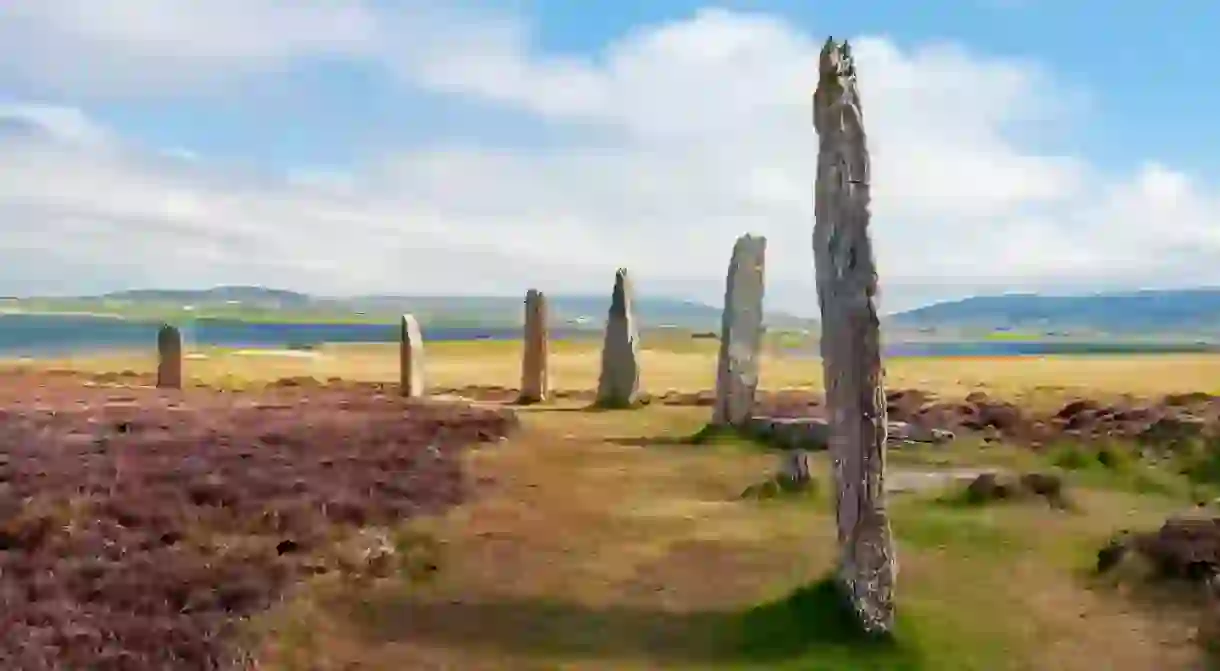9 Incredible Neolithic Sites to See in Scotland

Scotland is more than just a pretty place. Found sprouting amidst the wide mix of enchanting landscapes are a vast number of ancient ruins and excavated sites built some 5,000 years ago during the Neolithic era.
These mysterious structures include age-old settlements, stone circles and endless ceremonial and burial sites. Each holds a key to a bygone world. The Heart Of Neolithic Orkney consists of four World Heritage Sites widely regarded as the finest in Western Europe. Check off that wanderlist, and explore the most breathtaking Neolithic jewels in Scotland.
Skara Brae
Archaeological site, Ruins

The Standing Stones Of Stenness
Archaeological site, Ruins

Another key player basking in the Heart Of Neolithic Orkney World Heritage Site, the Standing Stones Of Stenness are situated upon an ancient and possibly sacred ceremonial ground. Located at the beginning of the Brodgar peninsula, these supernatural-seeming megaliths measure up to six metres (19.6 feet) in height and once stood as a ring of 12 that circled a large lone hearth. The remaining stones, although incomplete, are both imposing and captivating. Many believe that the Stenness Stones are actually the earliest henge monument in the British Isles.
Maeshowe
Archaeological site, Ruins

Praised as one of Western Europe’s finest burial chambers, Maeshowe is a Neolithic design masterpiece within the Heart Of Neolithic Orkney. Concealed within the grassy mound is the enormous cairn thought to be over 5,000 years in age. In an incredible display of masonry and craftsmanship, massive standing stones await inside the atmospheric main chamber, which features cells that branch off in different directions. During the 12th century, Viking invaders broke into the tomb and left their mark in the form of graffiti runes. Perhaps most amazingly of all is that the entrance passage was designed to align with the winter sunset. A resplendent spectacle, the beaming rays perfectly illuminate the chamber and nearby Barnhouse Stone for three weeks before and after the shortest day of each year.
Ring Of Brodgar
Archaeological site, Ruins

As far as Scotland’s constellation of stone circles go, the Ring Of Brodgar is an absolute beauty. Crowned one of the most spellbinding prehistoric monuments in the British Isles, this brooding stone circle and henge is another star in the Heart Of Neolithic Orkney. As a ceremonial site once used by ancient peoples for worship, the area hosts at least 13 burial mounds and over 30 gigantic standing stones. Remarkably, the circle is thought to have originally boasted 60 of these enigmatic rocks. In 1846, Scots geologist Hugh Miller referred to the Ring Of Brodgar as ‘an assemblage of ancient druids, mysteriously stern and invincibly silent and shaggy’.
Callanish Stones
Archaeological site, Ruins

Knap Of Howar
Archaeological site, Ruins

To think that the foundations of Knap Of Howar, the oldest standing stone buildings in all of north-west Europe, were laid over 5,000 years ago is quite frankly mind-blowing! More than just a pile of rubble, the sites hold the remains of two houses, and still contain the same stone cupboards and stalls from a bygone world. Found embedded into the landscape of Orkney’s own Papa Westray (or Papay to locals), these old houses are the best-preserved and most visible early Neolithic settlements in north-western Europe.
Kilmartin Glen
Archaeological site, Ruins

Situated between Oban and Lochgilphead, Kilmartin Glen traces the boundaries of Kilmartin, a picturesque village on Scotland’s west coast. The site plays host to an intriguing array of ancient ruins ranging from an abundance of cairns and standing stones to carved rock, stone circles, forts and castles. Unsurprisingly then, Kilmartin Glen is known for having some of the most important Neolithic and Bronze Age remains in the whole of Scotland. Within the six-mile (9.6-kilometre) radius of the village alone, there exists over 350 ancient monuments, 150 of which date back to prehistoric times.
Croft Moraig Stone Circle
Archaeological site, Ruins

Although Croft Moraig is found near the village of Dull (not as boring as you’d think) and it may not be as aesthetically impressive as its Calanais or Stenness counterparts, don’t judge a stone circle by its outward appearance. This age-old structure is a complex site that was completed in multiple phases. Archaeological evidence suggests that these mysterious grey stones have mythic associations with the sun and moon, while others believe the site was the dwelling-place of a priest, witch-doctor or shaman. It’s places such as these that inspire books like Outlander and Harry Potter!
Machrie Moor Standing Stones
Archaeological site, Ruins

The six stone circles (known collectively as the Machrie Moor Standing Stones) on the west side of Arran near Blackfoot stand amidst a historically rich landscape of great archaeological significance – think stone circles, standing stones, hut circles, burial cairns and cists. Shooting up like roots from the dramatic Scottish moorland, these haunting standing stones are unlike anything else and are thought to have once been the Neolithic HQ for important rituals and domestic activities.













